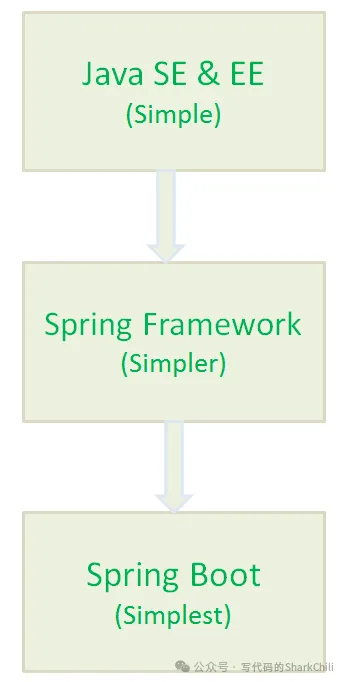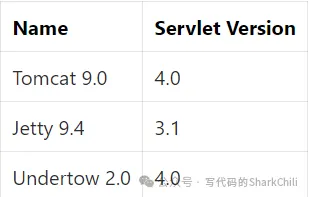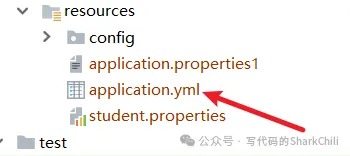在当今的软件开发领域,Spring Boot 犹如一颗璀璨的明星,散发着耀眼的光芒。它以其强大的功能和便捷的特性,成为了众多开发者的首选框架。当我们深入探究 Spring Boot 的世界,会发现其中蕴含着丰富而关键的核心知识点,这些知识点犹如构建大厦的基石,支撑着整个应用的高效运行。

为什么需要Spring boot
Spring框架是轻量级Java框架,他完全可以基于配置+一些POJO(简单的Java对象,不是JavaBean, EntityBean 或者 SessionBean,无需担任任何的角色)即可完成一套web服务器开发。 尽管是轻量级,但是还是需要配置大量的xml,而Spring boot则将繁琐的配置全部封装起来,使得我们可以开箱即用。

相较于原生的Spring他有着如下优点:
- 可以非常方便的开发出Spring应用容器。
- 基于Spring boot开发应用的时间比Spring要少很多,生产力明显提高了。
- 可以非常方便集成其他Spring组件,例如Spring JDBC、Spring ORM等。
- Spring boot内嵌了web容器,例如tomcat服务器,也可以改为jetty。
- Spring boot内部提供的CLI命令行工具,例如java或者Groovy。
- 无需编写大量的xml配置文件。
- Spring Boot 遵循“固执己见的默认配置”,以减少开发工作(默认配置可以修改)。
- Spring boot内部也提供了许多的插件,例如Maven 或Gradle,使得我们的可以快速的开发或者测试Spring应用。
什么是Spring Boot Starters
原本我们开发web应用需要手动引入mvc、jackson等各种依赖,有了Starters之后,我们只需引入一个Starters依赖即可完成所有Spring web应用的配置,非常方便。
SpringBoot应用Starters基本的一共有44种,具体如下:
1)spring-boot-starter 这是Spring Boot的核心启动器,包含了自动配置、日志和YAML。
2)spring-boot-starter-actuator 帮助监控和管理应用。
3)spring-boot-starter-amqp 通过spring-rabbit来支持AMQP协议(Advanced Message Queuing Protocol)。
4)spring-boot-starter-aop 支持面向方面的编程即AOP,包括spring-aop和AspectJ。
5)spring-boot-starter-artemis 通过Apache Artemis支持JMS的API(Java Message Service API)。
6)spring-boot-starter-batch 支持Spring Batch,包括HSQLDB数据库。
7)spring-boot-starter-cache 支持Spring的Cache抽象。
8)spring-boot-starter-cloud-connectors 支持Spring Cloud Connectors,简化了在像Cloud Foundry或Heroku这样的云平台上连接服务。
9)spring-boot-starter-data-elasticsearch 支持ElasticSearch搜索和分析引擎,包括spring-data-elasticsearch。
10)spring-boot-starter-data-gemfire 支持GemFire分布式数据存储,包括spring-data-gemfire。
11)spring-boot-starter-data-jpa 支持JPA(Java Persistence API),包括spring-data-jpa、spring-orm、hibernate。
12)spring-boot-starter-data-MongoDB 支持MongoDB数据,包括spring-data-mongodb。
13)spring-boot-starter-data-rest 通过spring-data-rest-webmvc,支持通过REST暴露Spring Data数据仓库。
14)spring-boot-starter-data-solr 支持Apache Solr搜索平台,包括spring-data-solr。
15)spring-boot-starter-freemarker 支持FreeMarker模板引擎。
16)spring-boot-starter-groovy-templates 支持Groovy模板引擎。
17)spring-boot-starter-hateoas 通过spring-hateoas支持基于HATEOAS的RESTful Web服务。
18)spring-boot-starter-hornetq 通过HornetQ支持JMS。
19)spring-boot-starter-integration 支持通用的spring-integration模块。
20)spring-boot-starter-jdbc 支持JDBC数据库。
21)spring-boot-starter-jersey 支持Jersey RESTful Web服务框架。
22)spring-boot-starter-jta-atomikos 通过Atomikos支持JTA分布式事务处理。
23)spring-boot-starter-jta-bitronix 通过Bitronix支持JTA分布式事务处理。
24)spring-boot-starter-mail 支持javax.mail模块。
25)spring-boot-starter-mobile 支持spring-mobile。
26)spring-boot-starter-mustache 支持Mustache模板引擎。
27)spring-boot-starter-Redis 支持Redis键值存储数据库,包括spring-redis。
28)spring-boot-starter-security 支持spring-security。
29)spring-boot-starter-social-facebook 支持spring-social-facebook
30)spring-boot-starter-social-linkedin 支持pring-social-linkedin
31)spring-boot-starter-social-twitter 支持pring-social-twitter
32)spring-boot-starter-test 支持常规的测试依赖,包括JUnit、Hamcrest、Mockito以及spring-test模块。
33)spring-boot-starter-thymeleaf 支持Thymeleaf模板引擎,包括与Spring的集成。
34)spring-boot-starter-velocity 支持Velocity模板引擎。
35)spring-boot-starter-web S支持全栈式Web开发,包括Tomcat和spring-webmvc。
36)spring-boot-starter-websocket 支持WebSocket开发。
37)spring-boot-starter-ws 支持Spring Web Services。
Spring Boot应用启动器面向生产环境的还有2种,具体如下:
38)spring-boot-starter-actuator 增加了面向产品上线相关的功能,比如测量和监控。
39)spring-boot-starter-remote-shell 增加了远程ssh shell的支持。
最后,Spring Boot应用启动器还有一些替换技术的启动器,具体如下:
40)spring-boot-starter-jetty 引入了Jetty HTTP引擎(用于替换Tomcat)。
41)spring-boot-starter-log4j 支持Log4J日志框架。
42)spring-boot-starter-logging 引入了Spring Boot默认的日志框架Logback。
43)spring-boot-starter-tomcat 引入了Spring Boot默认的HTTP引擎Tomcat。
44)spring-boot-starter-undertow 引入了Undertow HTTP引擎(用于替换Tomcat)。
Spring Boot 支持哪些内嵌 Servlet
Spring支持的内嵌Servlet有3种:
- Tomcat (这个是默认的容器)
- Jetty
- Undertow

正是因为Spring boot内嵌了web容器,使得我们启动web程序就像启动普通Java程序的一样方便,由于Spring boot默认使用的web容器是Tomcat ,如果我们想修改可以使用下面这种方式排除tomcat容器,再引入其他容器
详解@SpringBootApplication 这个注解
这个注解我们完全可以通过源码就知道它大概做的实际,如下所示,可以看到SpringBootApplication 主要是由SpringBootConfiguration、EnableAutoConfiguration、ComponentScan构成。这三个注解分别是意思是:
- SpringBootConfiguration内部有一个Configuration注解,所以它的意思是允许在上下文开启额外bean或者其他配置类。
- EnableAutoConfiguration启用Spring boot自动配置机制。
- ComponentScan自动扫描当前类的包下的所有被@Component (@Service,@Controller)注解的类。
Spring是如何启动的(重点)
总结一下大概有9个步骤:
- 创建监听,并准备监听。
- 容器环境预配置。
- 打印banner。
- 创建应用上下文即applicationContextFactory。
- 容器刷新前置处理:进行应用上下文各种配置初始化,拿到我们的启动类元信息生成BeanDefinition存入beanDefinitionMap中。
- 容器刷新,即走到Spring的IOC逻辑,手机配置、注解中的bean信息存入beanDefinitionMap,然后进行bean的创建和注入。
- 容器刷新后置处理,默认为空。
- 发出容器刷新结束事件ApplicationReadyEvent通知。
- 调用callRunners获取所有容器中的ApplicationRunner和CommandLineRunner的run方法并执行。
对应的我们给出源码即SpringApplication下的run方法,读者可参考上述流程阅读一下下面这段源码:
Spring Boot 的自动装配是如何实现的
关于spring自动装配的原理和使用,建议阅读笔者这篇文章,里面有详尽的分析和实践:
为什么会有yml格式的文件,和properties区别是什么
相比于properties,yml格式的文件结构更加清晰,更易于阅读和理解,但是缺点也很明显,因为格式的严格要求,很可能因为格式原因导致配置无法读取,以笔者为例,线上配置seata配置时明明注册地址,但是服务始终读取不到配置,导致启动失败,这种问题是肉眼无法观察的:

而且yml还有一个缺点即@PropertySource 这个注解无法读取yml格式的配置数据。
Spring Boot 常用的读取配置文件的方法
通过 @value 读取简单直观的配置:为了演示这种读取方式,我们可以在resource目录下建立一个 application.yml文件

配置文件内容为:
后续如果我们希望获取到myConfig这个值的话,只需按照下面这种方式引入即可,注意value注解获取配置值的方式,Spring并不推荐使用。
(1) 通过@ConfigurationProperties读取并与 bean 绑定:
这种方式相较于上面那种更加强大,可以与bean绑定,例如我们yml的配置文件内容如下(注意配置名称必须全小写,否则会报一些奇怪的错误)
那么我们就可以编写一个类,代码如下所示,使用ConfigurationProperties引入前缀为myobj的配置内容即可,该配置就会将myobj前缀下的所有配置和我们的类绑定
(2) @PropertySource读取指定的 properties 文件
有时候我们希望指定配置文件和类进行绑定,那么我们就可以使用PropertySource注解,例如我们在resource目录下有个student.properties文件,内容为:
我们只需使用PropertySource执行路径以及配置文件名,再配合value即可完成属性绑定。
Spring Boot 加载配置文件的优先级
大体来说优先考虑外部、properties或者yml指明profile的文件:
- 命令行参数。所有的配置都可以在命令行上进行指定。
- 操作系统环境变量 。
- jar包外部的application-{profile}.properties或带spring.profile的application.yml配置文件
- jar包内部的application-{profile}.properties或带spring.profile的application.yml配置文件,再来加载不带profile。
- jar包外部的application.properties或不带spring.profile的application.yml配置文件
- jar包内部的application.properties或不带spring.profile的application.yml配置文件
常用的 Bean 映射工具有哪些
常见的是:MapStruct、ModelMapper、Dozer、Orika、JMapper 这几种吧。
最常用的还是MapStruct,它的工作原理也很简单,我们声明一个转换接口后,它会在编译期为了我们生成转换实现类的字节码文件。
对此我们不妨距离一下它的使用方式,首先引入版本号、依赖、插件。
- 版本号:
- 依赖:
- 插件:
例如我们现在有个Doctor 希望转为DoctorDTO类,代码如下所示:
DoctorDTO 类,可以看出地址的字段名为dstAddr,和上面的srcAddr有区别:
所以我们编写一个接口,如下所示,对于字段名不一样的,我们使用Mapping手动配置映射关系:
测试代码,可以看到bean转换完成:
通过源码我们可以看到这个接口的实现类会在编译器生成:

Spring Boot 如何监控系统实际运行状况
引入spring-boot-starter-actuator的依赖:
然后键入下面的地址即可查看对应端点的信息:http://localhost:8080/actuator
Spring Boot 如何做请求参数校验
有两种校验框架,一个是Hibernate Validator,还有一个是JSR(Java Specification Requests)校验,后者比较常用,无需引入特殊的依赖。就例如我们现在有个Person类,希望名字不为空,性别是是数字最大值为2,而email必须为邮箱格式,那么我们就可以基于JSR的注解进行说明。
当他作为controller的requestBody的参数时,用法如下所示:
假如我们想校验路径参数时,我们只需在Controller上方加一个注解@Validated,然后对于路径参数加入校验注解Valid +校验规则注解即可即可。
补充一下常见的一些校验注解:
如何使用 Spring Boot 进行全局异常处理
通过@ControllerAdvice将控制器声明为增强器,然后通过ExceptionHandler 对自己自己的异常进行处理。 例如我们想处理所有控制器的BindException,代码如下所示:
Spring Boot 中如何实现定时任务
首先在启动类中添加@EnableScheduling注解,然后编写一个定时任务bean,然后在定时任务的方法上添加@Scheduled注解:




































